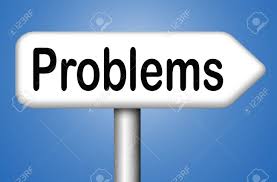My friend, Tim Ohai, made an interesting statement, “Sadly many sales people have no idea how to identify when no customer problem exists.”
I think there is a lot of truth to the statement. Perhaps the reality is that too many sales people aren’t even identifying the customer problem–the customer is.
There’s some evidence to support this, increasingly, sales people are getting involved later in the customer buying process. Depending on the research you believe, the customer is anywhere between 57-90% through their buying process when they first engage sales people. The customer has already determined they have a problem, now they are looking for solutions.
Or what about the very high percentage of buying journeys that end in no decision made? While a lot of that is the customer inability to navigate their own buying process, some of it is the customer hasn’t been able to crystallize their own definition of the problem and impact. If sales people knew how to identify the problem, helping the customer understand it, and the impact on their business, wouldn’t the percentage of buying journeys ending in no decision made be reduced?
Think about the prospecting calls or emails you get, “Hi, I’m Susan from XYZ Cool Solutions. Our products help customers do this….. Are you interested in learning more about how we can help you?”
There are thousands of variations of this pitch, but it puts the onus on the customer to think, “Do I have the problem this company solves, should I talk to this person?” Unfortunately, they are doing that in real time, since they are busy and distracted, they probably don’t take the time to figure it out, instead they respond, “No, we don’t need that…” or “I’m too busy right now…”
Of course, some sales people ask a few simple discovery questions, trying to elicit a problem. Usually, these are very focused questions with the customer listening for a specific response, triggering a sales pitch.
It may go something like, “Are you finding enough qualified prospects to help your sales people fill their funnels?” If the customer responds, “No…,” this triggers the sales pitch, “Our solution eliminates this problem….”
Too often, the sales person fails to ask the right follow up questions, like, “Why aren’t they finding the right number of prospects” followed by “how many do they need to find/what’s the gap,” followed by “How are they doing it now,” followed by ” What’s the impact of this on their ability to achieve their goals,” followed by, “How is this impacting the overall ability of the organization to achieve their goals.” followed by……..
The reality, is too many sales people aren’t really determining if the customer has a problem, how important it is to them, and whether they want to do anything about it.
As a result they waste a lot of their time and the customers’ or they fail to create the value they could or should.
Before we even begin to present a solution, sales people need to determine:
Does the customer have a problem?
Do they believe they have a problem?
Do they understand how that problem impacts their ability to achieve their goals?
Do they care about solving the problem?
Do they have a sense of urgency about solving the problem?
Each of these present an opportunity to drill down, engaging the customer in thinking about their business, their priorities, and their abilities to achieve their own goals.
Each of these present an opportunity to create value with the customer, providing leadership in their problem solving and buying process.
Each of these present an opportunity to differentiate yourself as a problem identifier and problem solver, instead of putting the onus on the customer to be the problem solver.
Each of these present an opportunity to differentiate yourself from the competition.
Perhaps our perspectives are incorrect. At best, we position ourselves as problem solvers. But that means the only people we can engage are people that are looking for solutions to problems.
What if we positioned ourselves as problem finders or problem identifiers? We would find a lot more opportunities because the majority of prospects may not even recognize they have a problem.
Before we can help the customer solve their problems, we have to, first, help them find and identify them.

Leave a Reply